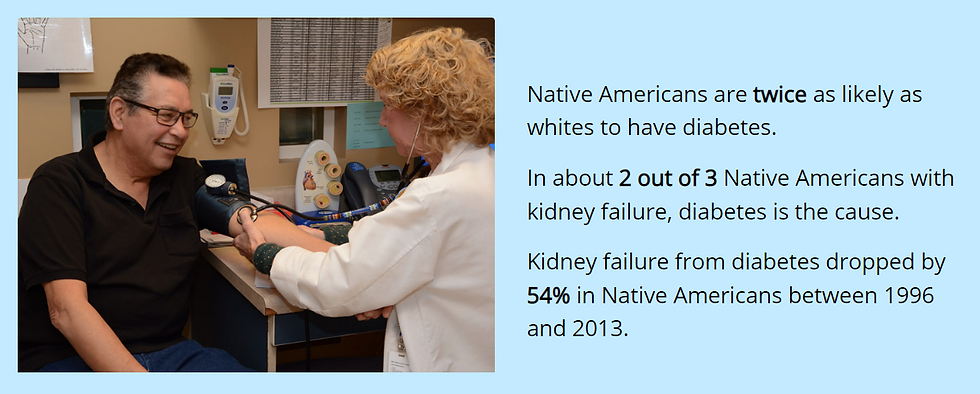Diabetes
- Diversity Health NetWoRx

- Jul 28, 2022
- 2 min read
Updated: Oct 28, 2023

Racial and ethnic minorities have a higher burden of diabetes, worse diabetes control and are more likely to experience complications (for examples, among Hispanics, the death rate from diabetes is 50% higher than for non-Hispanic whites) - FDA/Office of Minority Health and Health Equity
What is Diabetes?
Diabetes is a disease that occurs when your blood glucose, also called blood sugar, is too high. Blood glucose is your main source of energy and comes from the food you eat. Insulin, a hormone made by the pancreas, helps glucose from food get into your cells to be used for energy. Sometimes your body doesn’t make enough—or any—insulin or doesn’t use insulin well. Glucose then stays in your blood and doesn’t reach your cells.
Over time, having too much glucose in your blood can cause health problems. Although diabetes has no cure, you can take steps to manage your diabetes and stay healthy.
Sometimes people call diabetes “a touch of sugar” or “borderline diabetes.” These terms suggest that someone doesn’t really have diabetes or has a less serious case, but every case of diabetes is serious. (National Institute of Diabetes and Digestive and Kidney Diseases)
Did You Know...
There are different types of diabetes, including type 1, type 2, and prediabetes.
With type 1 diabetes, the body can’t make insulin. If you’re diagnosed with type 1, you’ll need to take insulin every day to survive. With type 2 diabetes, your body doesn’t use insulin well. The good news is that type 2 diabetes can be prevented or delayed with healthy lifestyle changes.
With prediabetes, your body may not be able to fully use the insulin you make, or your body may not make enough insulin to keep your blood sugar levels in a healthy range. People who have prediabetes have blood sugar levels that are higher than normal—but not yet high enough for a diagnosis of type 2 diabetes.

Source: CDC

Source: CDC
Resources:







Comments